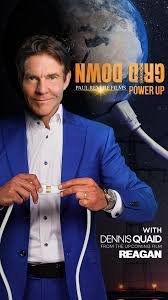Image Credit: IMDb
The vulnerability of the US power grid has become a pressing concern in recent years, with potential threats ranging from electromagnetic pulses to cyber attacks. “Grid Down Power Up” explores the critical importance of maintaining a stable and secure electricity infrastructure in the face of increasing challenges. This comprehensive review delves into the complexities of the power supply system and its susceptibility to various forms of disruption.
This analysis examines the structure of the US power grid and identifies major threats to its security. It also investigates the potential consequences of a widespread blackout and proposes solutions to enhance the resilience of critical infrastructure. By addressing these crucial aspects, the review aims to shed light on the steps necessary to safeguard the nation’s power supply and minimize the risk of catastrophic power failures.
Understanding the US Power Grid
The US power grid is a vast and complex network of transmission lines, power plants, and distribution systems that supplies electricity to millions of homes and businesses. Constructed primarily in the 1950s and 1960s, much of this infrastructure has reached or exceeded its intended lifespan. The grid consists of three main interconnections: the Eastern Interconnection, the Western Interconnection, and the Electric Reliability Council of Texas (ERCOT).
This aging system faces numerous challenges, including increased demand due to electrification of buildings and transportation, emerging technologies, and the integration of renewable energy sources. The grid’s vulnerability to extreme weather events, physical attacks, and cyber threats has also become a growing concern. With 70% of transmission lines over 25 years old, the need for modernization and improved resilience has become critical to ensure the continued reliability and security of the nation’s power supply.
Major Threats to Grid Security
The US power grid faces several significant threats that could cause widespread disruption. Electromagnetic pulse (EMP) attacks, whether from nuclear detonations or non-nuclear sources like E-bombs, pose a severe risk. These pulses can damage electronic equipment over large areas, potentially destroying industrial processes, railway networks, and access to water supplies. Geomagnetic disturbances (GMDs) caused by solar eruptions also threaten the grid’s stability. A Carrington-class event could cause catastrophic damage, potentially leaving millions without power for extended periods. Cyber attacks have become increasingly sophisticated, with state-sponsored actors targeting critical infrastructure. Physical attacks, including deliberate shootings at substations, have also risen sharply in recent years, highlighting the vulnerability of grid assets to both domestic and international threats.
Consequences of a Grid-Down Scenario
A grid-down scenario has far-reaching consequences that affect every aspect of modern life. The impact on critical infrastructure is severe, with disruptions to communications, water supply, and transportation systems. Retail businesses, grocery stores, gas stations, ATMs, and banks close, causing economic turmoil. Public safety concerns arise as food spoilage and water contamination become prevalent. Medical care faces significant challenges, with power-dependent devices rendered useless and refrigerated medicines at risk. The economic impact is substantial, potentially affecting a nation’s GDP. Vulnerable communities, particularly those with lower incomes, are disproportionately affected by these outages, experiencing more frequent blackouts and less reliable electricity.
Proposed Solutions and Action Plan
Grid hardening, also known as storm hardening, is a crucial strategy to mitigate risks and protect utility customers from outages. This approach involves assessing potential vulnerabilities in the electric grid and taking proactive measures to strengthen key infrastructure. Some common grid-hardening techniques include replacing poles, burying lines, elevating substations, and implementing vegetation management.
The Federal Energy Regulatory Commission (FERC) estimates a 250% return on investment for grid hardening initiatives. This significant return is primarily due to avoided or reduced outages, which contribute to GDP growth. Additionally, these measures enhance reliability and boost customer satisfaction metrics.
To combat flooding, utilities can elevate substations above water level or add moats for protection. While expensive, strategic undergrounding of power lines in high-risk or densely populated areas can also be effective. Advanced technologies are gaining popularity to make power grids more resilient, lessening outages and downtime during natural disasters.
Conclusion
The comprehensive analysis of the US power grid’s vulnerabilities and potential threats emphasizes the urgent need for action to enhance its resilience. From electromagnetic pulses to cyber attacks, the challenges facing our electricity infrastructure are diverse and complex. The consequences of a grid-down scenario would have a far-reaching impact on every aspect of modern life, affecting critical infrastructure, public safety, and the economy. This underscores the importance of proactive measures to safeguard our power supply.
To address these challenges, grid hardening and modernization efforts are crucial. These initiatives not only protect utility customers from outages but also offer a significant return on investment. By implementing advanced technologies and strategic infrastructure improvements, we can make our power grid more resilient and better equipped to handle natural disasters and other threats. As we move forward, it’s essential to continue exploring innovative solutions to ensure the stability and security of our nation’s power supply for generations to come.
FAQs
Is the documentary “Grid Down, Power Up” available on Amazon?
Yes, the documentary “Grid Down, Power Up” will be available on Amazon starting this September. It aims to rally support for a more resilient power infrastructure and encourages viewers to become proactive in advocating for a stronger, more secure grid.
What does the documentary “Grid Down, Power Up” focus on?
The documentary “Grid Down, Power Up” (2022) highlights the risks and consequences associated with a potential failure of the US power grid, which could leave the country without electricity for an extended period. It discusses the vulnerabilities that have led to this potential crisis and explores solutions to enhance grid resilience.
























[…] Read More About: Grid Down Power up A Comprehensive Review […]